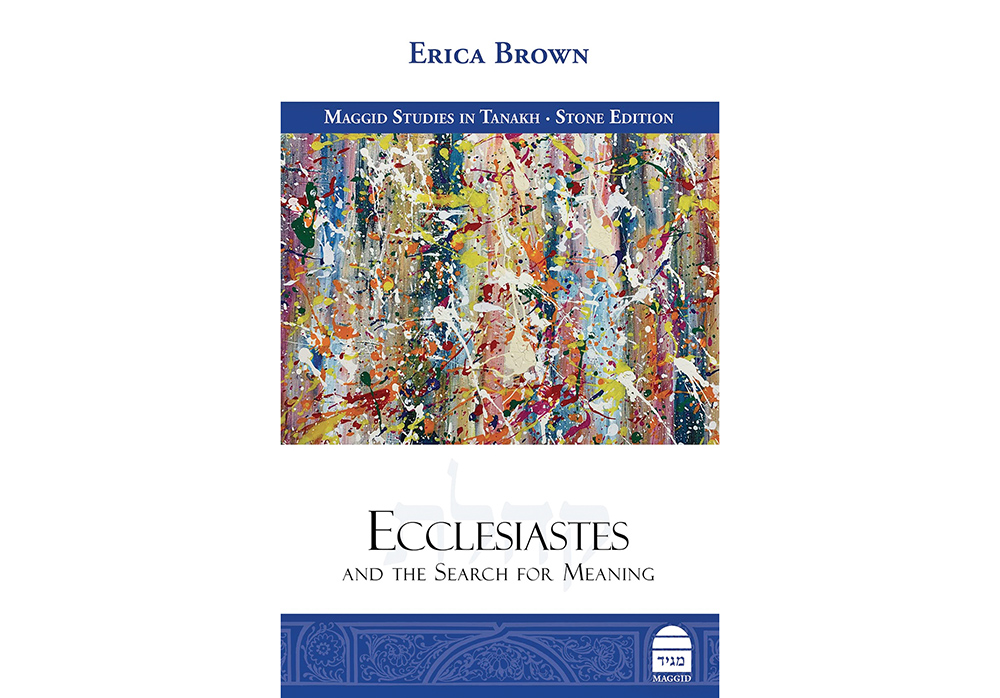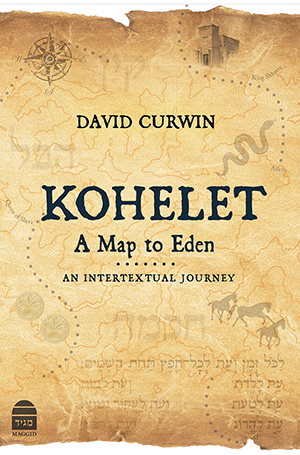
Reviewing: “Ecclesiastes and the Search for Meaning” by Erica Brown. Maggid Books. 2023. English. Hardcover. 528 pages. ISBN-13: 978-1592646357.
Every year, the book of Kohelet (Ecclesiastes) is read on Sukkos. There are many reasons why it is read then. A theme of Sukkos is that everything is ultimately temporary, and nothing evokes that like our moving into a temporary dwelling.
Another reason is that Sukkos, occurring at the end of the harvest season, is a moment where a person may take somewhat of an irrational exuberance to their accomplishments. The crops stored for the following year may give the farmer an over-accomplished sense of permanence. To which the reading of Kohelet quickly brings them back to earth.
The running theme in Kohelet is that life is emptiness. In fact, it opens with the rather morose verse, “Everything is meaningless, says Kohelet, Completely meaningless.” Even after a successful harvest, the grain will soon disappear, and the work must start again. All of the person’s accomplishments are things of the past.
The fact that Kohelet is part of the Jewish canon was not a sure thing. The challenge of reading Kohelet is that it is fraught with misunderstanding. If life is really that of meaninglessness, why even bother? Perhaps take the words of 8:15 that “for the only good a man can have under the sun is to eat and drink and enjoy himself” and spend an endless vacation.
Yet life, contrary to a cursory reading of Kohelet, does have purpose and meaning. But deciphering Kohelet takes work. For those looking to understand and plum its depth, in ”Ecclesiastes and the Search for Meaning,” Dr. Eric Brown, director of the Sacks-Herenstein Center for Values and Leadership at Yeshiva University, has written a masterful work of brilliant scholarship.
Kohelet starts with meaningless and progresses along that path for 12 chapters. Reading Kohelet is a roller coaster ride of emotions, contradictions, questions of justice, and more. Brown does a fantastic job of bringing out the depths of the text and the challenges it brings. This is an intense read of incredible depth. Brown does such a good job that, at times, reading of the misery and desolation of Kohelet, their soul is shaken to the core.
Her book is like a fine bourbon, best taken in sips rather than large gulps. Reading chapter after chapter of injustice and empty vanities can leave the reader in somewhat of a morose state. It’s only in the last chapter that things turn bright.
Brown is a faithful student of the late great Rabbi Lord Jonathan Sacks. There is a seeming tension between the existential and nihilistic Kohelet and the Kohelet who find meaning in life. Rabbi Sacks astutely notes that Kohelet does not find life meaningless, futile, or mere vanity. He feels that’s an error in translation. Kohelet finds and sees that life is short.
And in man’s short life, the prospect of death threatens to rob him of all happiness until Kohelet realizes that mortality is the very condition of our happiness. Because life is short, every moment is precious. And the nature of human life, for Kohelet, is the reason for both the crushing pain and soaring joy.
The challenge with Kohelet is that he deals with numerous existential ideas and the complexities of human life. Kohelet asks plenty of complex questions, and the challenge is that in recent times, these questions have been answered with the various forms of “shut your mouth” or “only a heretic would ask something like that.”
Brown quotes Michael V. Fox of the Department of Hebrew and Semitic Studies at the University of Wisconsin at Madison, who notes that the final chapter of Kohelet grants permission for intellectual exploration as long as it does not undermine a life of faith. And Kohelet allows the reader to probe the ways of God and man, wherever this may lead, so long as we make the fear of God and obedience to the Commandments the final standard of behavior.
Finally, it’s easy to conclude that Kohelet was an unhappy person. Brown shows that’s far from the truth. He is not dissatisfied with his life or his wealth. He enjoyed his wealth but understood its limitations.
Brown has done an utterly incredible job of bringing the many dimensions and complexities of Kohelet to light. Her sources run the gamut from the traditional commentaries of the Rishonim to modern poets such as Yakov Azriel and the paintings of Thomas Cole and others. It’s a brilliant mosaic of insights that shows that while everything may seem meaningless, there’s much beauty in the world.
Brown concludes that she tried to write an optimistically oriented commentary to a book often assumed to be pessimistic and even, at times, nihilistic. Kohelet lays bare some of life’s hardest confrontations with our insignificance and ephemerality. And to that, she’s written a most remarkable work.
 Reviewing: “Kohelet: A Map to Eden: An Intertextual Journey” by David Curwin. Maggid Books. 2023. English. Hardcover. 250 pages. ISBN-13: 978-1592646111.
Reviewing: “Kohelet: A Map to Eden: An Intertextual Journey” by David Curwin. Maggid Books. 2023. English. Hardcover. 250 pages. ISBN-13: 978-1592646111.
Rabbi David Fohrman is the founder and lead scholar at Aleph Beta. Anyone who has read his works or heard his brilliant lectures knows of his close-reading methodology. By focusing on various aspects of the text, he, like those at the Yeshiva Gush Etzion, find many deeper worlds of meaning that can be extracted.
In “Kohelet: A Map to Eden,” author David Curwin, a student of Rabbi Fohrman, has written a fascinating work that uses an intertextual approach to bring out the depth of Kohelet.
Curwin’s approach here is to show the connection between Shlomo HaMelech, author of Kohelet, and the primordial Adam. Curwin proposes that Kohelet can be read as Adam reflecting back on the tragedies of his life. He reviews many verses from Kohelet to show how strong a connection there is to the story of Adam.
Using an intertextual approach gives the reader an enhanced understanding of the narratives. For example, the Adam story helps us understand what Shlomo was experiencing at the end of his life. Likewise, Kohelet helps us understand the Adam story by showing us how responsible Adam felt for the death of Hevel. And as to Hevel, that is a prominent theme in Kohelet.
In chapter after chapter, he compares the texts from Bereshis and Kohelet to show many connections. There is a lot of symmetry between the stories in the opening chapters of Bereshis and the book of Kohelet.
He also shows parallels in Kohelet and Adam to other stories, including that of the spies in the desert, wine, tzitzit and more. For example, he writes that, like Adam, the spies veered from a justified quest for knowledge of true and false, to a subjective determination of good and bad.
For those that like comparative textual analysis, they will find “Kohelet: A Map to Eden” a most interesting and insightful work.
Ben Rothke lives in New Jersey and works in the information security field. He reviews books on religion, technology, philosophy and science. Follow him on Twitter at @benrothke. His new was just published: The Definitive Guide to PCI DSS Version 4: Documentation, Compliance, and Management.









